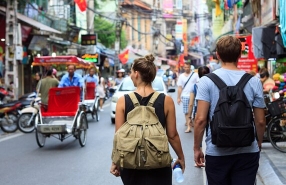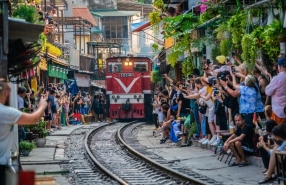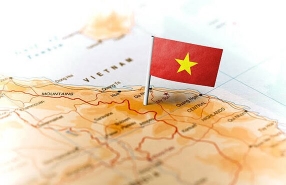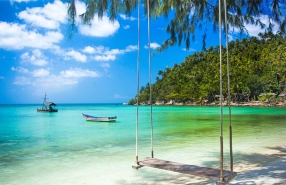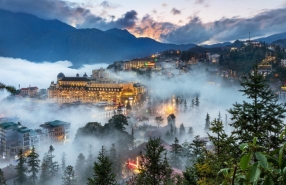What To Do In Si Ma Cai? Enchanting Land Of Sapa In Northern Vietnam

During a Sapa trip, you must not miss Si Ma Cai, a wild and majestic land with lush forests, vast rice terraces, and towering mountains. Additionally, the local ethnic minorities are always friendly and welcoming, inviting visitors worldwide to their villages to enjoy local cuisine and participate in traditional festivals. If you're still deciding on your destination in Sapa Lao Cai, let yourself be captivated by the beauty of Si Ma Cai. This place will undoubtedly enchant you and leave you with unforgettable memories!
Table of Contents
I. Where is Si Ma Cai Sapa?
Si Ma Cai is a border district in Lao Cai province, northern Vietnam, located about 130 km from Sapa town. Nestled near the Chay River and surrounded by limestone mountains, Si Ma Cai resembles a wild and mysterious land that attracts many enthusiasts of authentic travel.
You will discover endless limestone mountain ranges, cliffs, dense forests, winding rice terraces, and beautiful buckwheat flower valleys. The region's pure and fresh air offers a sense of relaxation, far from the hustle and bustle of big cities.
Moreover, Si Ma Cai is full of mysterious places that captivate visitors, such as Lu Than, Ban Me, Sin Cheng, and San Chai. These names, given by the Hmong ethnic group, carry special meanings. For instance, Si Ma Cai means "the market of the strange horse". A trip to Si Ma Cai Sapa promises enriching encounters with ethnic minorities and opportunities to discover their unique cultures.
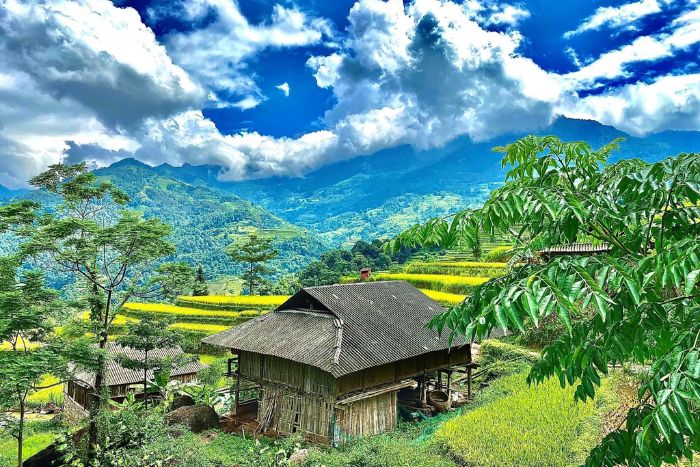
II. When to visit Si Ma Cai Vietnam?
Located in the mountainous region of northern Vietnam, with high terrain, Si Ma Cai Sapa enjoys a cool climate all year round, making it ideal for visits in any season.
However, the most beautiful time to visit Si Ma Cai is during the buckwheat flower bloom, which occurs in December. You can also admire peach, pear, and plum blossoms in spring, between January and March. Don't miss the harvest season, or the ripe rice season, which offers a stunning spectacle of golden rice terraces in Si Ma Cai.
III. How to get to Si Ma Cai Sapa?
You can reach Si Ma Cai by road from the northern provinces of Vietnam. From Hanoi, you can choose between a sleeper bus, a night train, or a limousine to get to Lao Cai. Then, continue by car from Sapa to Bac Ha, head towards the Coc Pai town, and finally pass through the Lung Phinh commune to get to Si Ma Cai.
IV. What to do in Si Ma Cai Lao Cai?
1. Visit the San Chai gray stone forest
Si Ma Cai's fame undoubtedly lies in the majestic San Chai gray stone forest. It is unknown how long these stones have rested underground and in the waterways, gradually forming this unique stone forest. Every morning, when the mist still envelops the stones, a mystical landscape unfolds, offering a scene unlike any other.
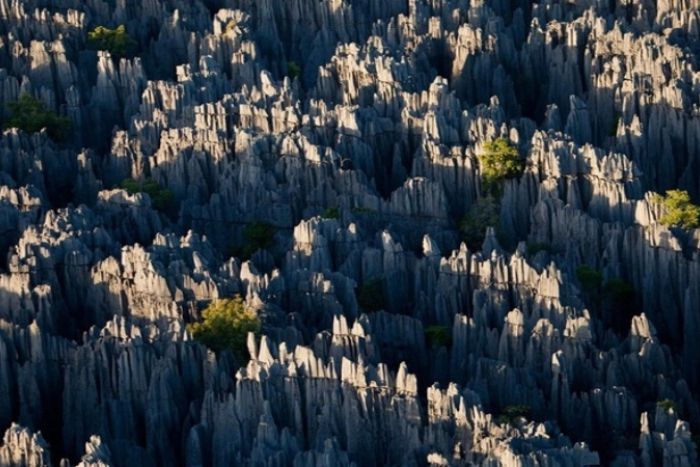
3. Walking in the Sa Moc forest of Thao Chu Phin
In the Thao Chu Phin commune, Si Ma Cai district, you can find the vast Sa Moc forest. A day spent walking in this forest allows for an exploration of the region's unique mountainous ecosystem, with evergreen trees standing resilient against the cold climate.
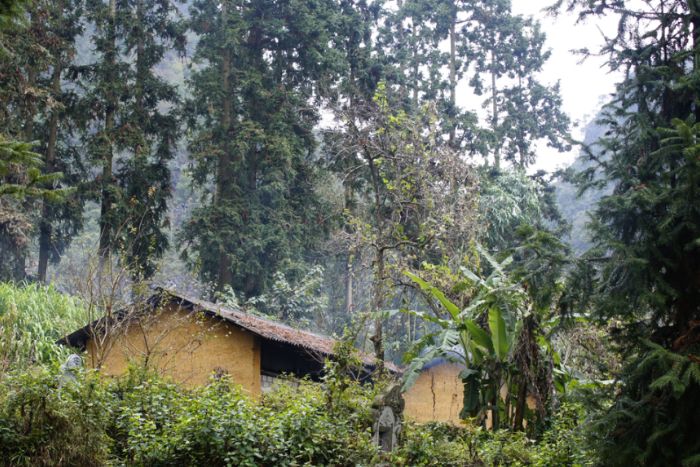
3. Immersion in the Sin Cheng rice terraces
During your trip to Si Ma Cai Sapa, you cannot miss the poetic and captivating beauty of the Sin Cheng rice terraces. These landscapes are the result of the local farmers' expertise combined with the grandeur of nature, offering breathtaking views. Be sure to visit the Sin Cheng rice terraces during the water season (May) and the golden season (September)!
4. Tasting amazing food in Si Ma Cai
Besides the stunning landscapes you must explore, discovering the local cuisine is also an experience not to be missed in Si Ma Cai. The culinary specialties are truly enticing, like Man Tham wine or corn wine, an essential drink at meals. The dishes are loved by many international travelers, especially the honey black chicken and black chicken soup. You can enjoy these dishes in restaurants, and ethnic markets, or while staying in a homestay with local families.
5. Admiring the beautiful flowers in Si Ma Cai
In addition to its wild and imposing beauty, Si Ma Cai also hides a romantic and colorful side in its vast flower valleys. Among them, the Lu Than buckwheat flower hill is the most popular spot for visitors.
If you wish to admire the buckwheat flowers in full bloom, covering the mountains and villages of Si Ma Cai in their pale pink-tinged white, you should visit the region at the end of the year through January, and you won't be disappointed.
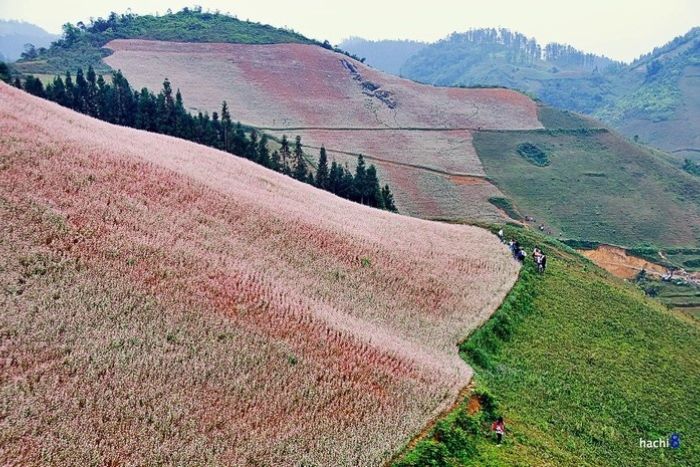
6. Cultural exchanges during ethnic festivals
Si Ma Cai Sapa is also a place where many traditional festivals take place, providing a cultural space and an opportunity to promote the customs and beliefs passed down through generations by the Hmong, Dao, and Nung ethnic groups. If you want to learn more and interact with the locals, don't miss the following traditional festivals:
- The Gau Tao Festival of the Hmong ethnic group (early in the first lunar month): is intended to pray for the prosperity and happiness of the villagers.
- The Xuong Dong Festival of Nung people (Dragon Day, first lunar month): marks the start of a new agricultural year, hoping for favorable rain and wind, and abundant harvests.
- The Forest Worship Ceremony - Cung Rung (early in the second and seventh lunar months): to pray for favorable weather, abundant harvests, the health of the inhabitants, and the prosperity of the forests.
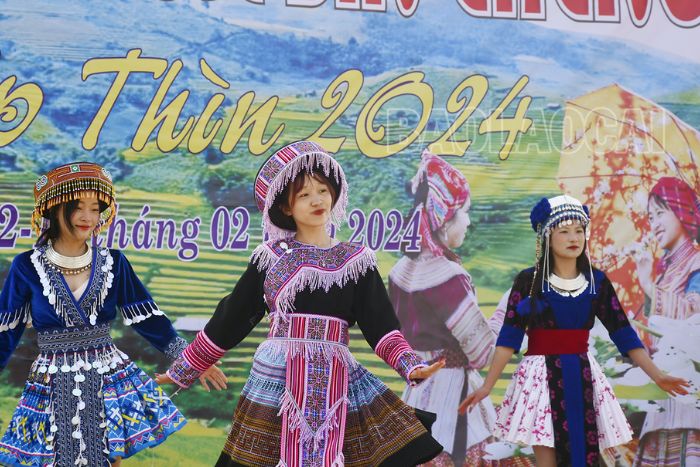
A Si Ma Cai Sapa trip will undoubtedly be an unforgettable experience to live at least once in northern Vietnam. Si Ma Cai leaves a strong impression on visitors, both through its impressive nature and the warm hospitality of its ethnic groups. We hope this information will be helpful for your next journey to Vietnam.
Yes, it is possible to do day trips from Sapa to Si Ma Cai.
- The journey takes approximately 2-3 hours by road, depending on traffic and weather conditions.
- Many travelers opt for this as a convenient way to explore the stunning landscapes and unique cultural experiences of Si Ma Cai without changing accommodations.
- Local travel agencies like Autour Asia often organize guided tours, providing transport and insights into the region's highlights, such as rice terraces, ethnic villages, and stone forests.
This makes it an ideal option for those with limited time but eager to experience the beauty of Si Ma Cai.
Staying at a homestay in Vietnam offers a unique and immersive cultural experience.
It allows you to connect closely with local families, learn about their daily lives, and enjoy authentic home-cooked meals. Homestays are often located in rural or scenic areas, providing a peaceful escape from bustling cities and a chance to explore Vietnam's natural beauty. Additionally, it supports local communities and offers a more personal and intimate experience compared to standard hotels.
If you value cultural exchange and authenticity, staying at a homestay in Vietnam is an excellent choice.
Related travel guide
Other similar articles
CUSTOMIZABLE BY LOCAL EXPERTS
Personalized trip at the original price!
REFUND GUARANTEE
We believe in our work and promise to give you money back.
GOOD PRICE / QUALITY
95% satisfied more than expected!
24/7 LOCAL SUPPORT
We are always available online to provide assistance at any time.
Most read articles
Autour Asia is highly recommended on
Embracing the mission of "Satisfied more than expected" and providing authentic experiences, we have received numerous recommendations on reputable travel forums:













